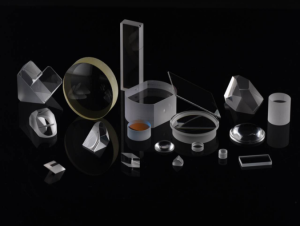Optical lenses are essential components in machine vision systems, which directly affect the quality of imaging and the implementation and effectiveness of algorithms. Optical lenses can be divided into short focus lenses, medium focus lenses, and telephoto lenses in terms of focal length; There are wide angle, standard, and telephoto lenses in terms of field of view size; In structure, there are fixed aperture prime lens, manual aperture prime lens, automatic aperture prime lens, manual zoom lens, automatic zoom lens, automatic aperture electric zoom lens, electric triple variable (aperture, focal length, focus can be changed) lens, etc.
The research and development and manufacturing of optical lenses are in the middle of the industry chain, with upstream equipment, instruments, and raw materials required for the production of optical lenses. The raw materials mainly include glass lenses, plastic lenses, electronic parts, plastic raw materials, metal components, etc. Downstream are the application fields of optical lenses, mainly including security monitoring equipment, mobile camera camera modules, car camera modules, machine vision systems, VR/AR devices, etc. From the perspective of the optical lens characteristics of lenses, optical lenses are mainly divided into three categories: plastic lenses, glass lenses, and glass plastic hybrid lenses. Whether it is a plastic lens assembled with plastic lenses or a glass lens assembled with glass lenses, its structure is composed of multiple lenses. Generally speaking, the more lenses there are, the higher the imaging quality of the lens. Plastic lenses and glass lenses have significant differences in material properties, processing techniques, transmittance, and other aspects, resulting in a wide range of applications.
Plastic lenses are lenses composed of optical plastic lenses, which are widely used in devices such as mobile phones and digital cameras due to their strong plasticity, ease of making into aspheric shapes, and convenience in miniaturization. Glass lenses are composed of glass lenses. Due to the high requirements for molding technology, coating technology, precision machining, and their high transmittance, they are more commonly used in the imaging field, such as DSLR cameras, scanners, and other equipment. Glass plastic hybrid lens, composed of partial glass lenses and partial plastic lenses, combines the characteristics of the two and has high refractive index optical performance and stability. It is widely used in lens modules such as surveillance cameras, digital cameras, and car mounted cameras.
The downstream of the optical lens industry is mainly divided into three types based on product application fields: security monitoring system manufacturers, mobile camera module manufacturers, and car camera module manufacturers. In the field of security video surveillance, the downstream of the lens industry mainly targets manufacturers of security video surveillance equipment.

With the continuous improvement of China’s urbanization level, the promotion of large-scale projects such as “safe cities”, “smart cities”, and “intelligent transportation”, as well as the focus of various levels and relevant departments on “strengthening the construction of social security prevention and control systems”, have provided a good policy environment for the development of China’s security industry. During the period from 2010 to 2016, the scale of China’s video surveillance market increased from 24.2 billion yuan to 96.2 billion yuan, with an annual compound growth rate of 25.86%. As of 2017, the scale of China’s video surveillance market has exceeded 100 billion yuan. It is preliminarily estimated that the scale of China’s video surveillance market will reach around 119.2 billion yuan in 2018, a year-on-year growth of 12%. The scale of China’s video surveillance market from 2010 to 2018 has seen fierce differentiated competition in mobile camera modules in recent years. With the popularization of smartphones, the camera function has become a key competitive factor for major mobile phone manufacturers. Mobile phone lens module manufacturers are also actively developing in the fields of dual camera lens, wide-angle, ultra-thin, large aperture, optical image stabilization and other * * fields, which also puts forward higher quality and process requirements for optical lens manufacturers in midstream.
In 2017, the main manufacturers’ shipments of mobile camera modules were in the field of consumer electronics such as automotive electronics. The downstream of the lens industry mainly targets manufacturers of automotive camera modules. With the increasing requirements for road traffic safety and automotive safety in European and American countries, as well as the rise of ADAS and the future unmanned driving market, manufacturers of in car camera modules have ushered in a good opportunity for development, and have also put forward higher quality and shipment requirements for in car lenses.
In recent years, the automotive lens industry in China has been in a period of expansion, with rapid development. In 2011, the production capacity of automotive lenses in China was 4 million units, and in 2015, it expanded to 18.8 million units. In the future, the Chinese car lens market will also be strongly driven by the outbreak of ADAS (Advanced Driver Assistance System) and the Internet of Vehicles market, which will continue to expand and have huge growth potential.
In summary, with the rapid rise of the terminal application product market, the development of the optical lens industry has put forward higher requirements for the design level and precision production and processing ability of optical lenses. At the same time, its increasing market demand also provides valuable opportunities for the sustainable and healthy development of the optical lens industry.



